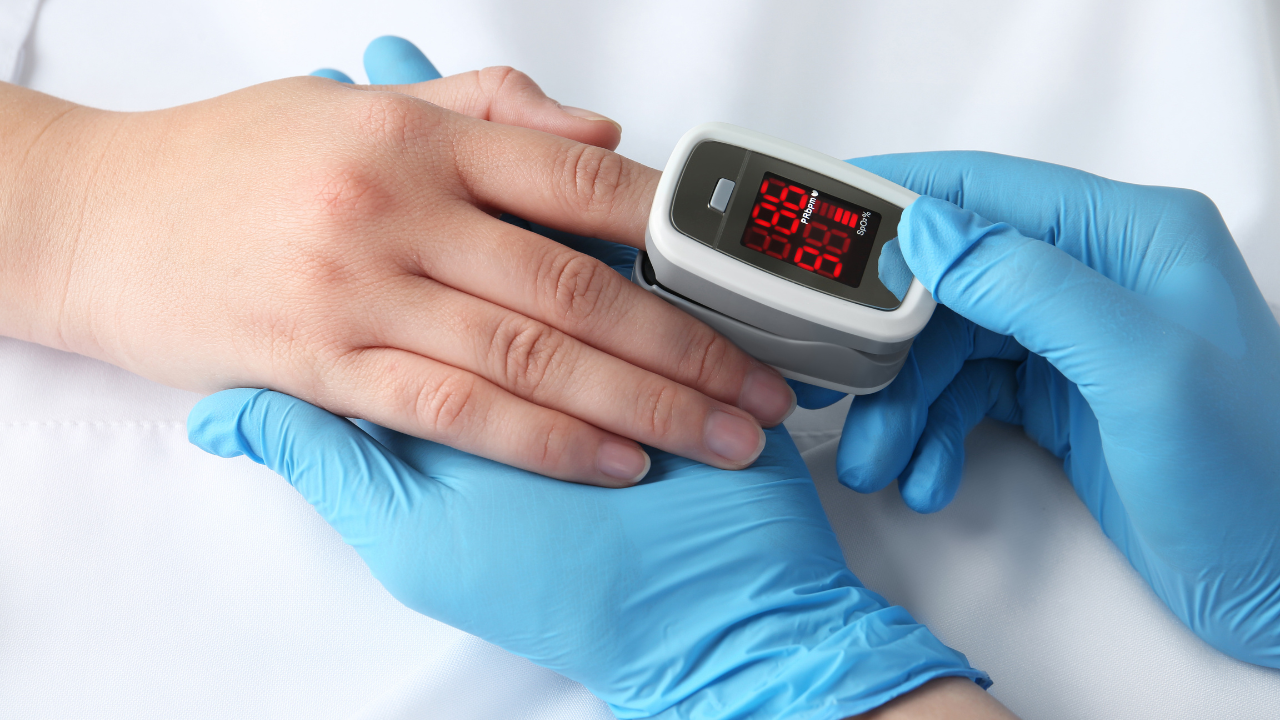FDA Clears First Fingertip Pulse Oximeter for OTC Sale
The MightySat Fingertip Pulse Oximeter is reportedly the first pulse oximeter available without a prescription.

Earlier this week, Masimo announced the FDA clearance of the MightySat Fingertip Pulse Oximeter, representing the first FDA-cleared fingertip pulse oximeter for over-the-counter (OTC) sale directly to consumers without a prescription. According to the company, the new device is equipped with Masimo SET pulse oximetry technology, known for accuracy and reliability in hospitals, addressing a significant gap in the market for dependable home-use medical devices.
The device is designed to deliver precise oxygen saturation (SpO2) and pulse rate (PR) measurements regardless of the patient's skin color or low perfusion, addressing a significant gap in the market for dependable home-use medical devices. This is the only pulse oximeter sold directly consumers cleared by the FDA for medical use, according to Masimo.1
“Until now, consumers and even healthcare providers had no way of knowing what pulse oximeter they could trust to use at home. On the internet and even in drug stores, they are inundated with a myriad of products that are unreliable, with misleading advertisements about their abilities to provide accurate measurements of oxygen saturation and pulse rate,” said Joe Kiani, founder, CEO, Masimo, in a company press release. “This clearance of MightySat Medical for consumers eliminates the confusion, placing an FDA-cleared, accurate, reliable, and revolutionary SET pulse oximeter, with technology that hospitals have been using for more than 25 years, directly into their hands. Healthcare providers can also now be confident when referring their patients to get MightySat Medical knowing that it has actually been cleared by the FDA as an OTC medical pulse oximeter.”
This clearance comes amid the FDA resuming discussions to address how to provide higher accuracy for people of color using pulse oximeters. According to an article by Axios, current technology can misread the level of oxygen saturation in patients with darker skin, with researchers suggesting software updates to eliminate any discrepancies. Despite the agency having no obligation to make any changes, it’s facing a considerable amount of pressure to act on the issue.2
"We shouldn't putz around. It's as important in people with respiratory diseases as blood glucose for diabetics," Meir Kryger, a retired sleep researcher and professor emeritus Yale School of Medicine, told Axios. “It's an important measurement, and the doctor or the consumer who's told to get one of these needs to have the confidence that the device is actually accurate."
References
- Masimo Announces the First FDA-cleared “Over-the-Counter” Fingertip Pulse Oximeter. Masimo. February 13, 2023. Accessed February 15, 2024. https://professional.masimo.com/company/news/newsmedia/#Masimo_Announces_the_First_FDA-cleared_Over-the-Counter_Fingertip_Pulse_Oximeter
- FDA renews debate over biased pulse oximeters. Axios. February 2, 2024. Accessed February 15, 2024. https://www.axios.com/2024/02/02/fda-pulse-oximeters-dark-skin-black-brown
Behind the Buzz: Why Clinical Research Leaders Flock to SCOPE Summit
February 7th 2025In this episode, we meet with Micah Lieberman, Executive Conference Director for SCOPE Summit (Summit for Clinical Ops Executives) at Cambridge Innovation Institute. We will dive deep into the critical role of collaboration within the clinical research ecosystem. How do we bring together diverse stakeholders—sponsors, CROs, clinical trial tech innovators, suppliers, patients, sites, advocacy organizations, investors, and non-profits—to share best practices in trial design, program planning, innovation, and clinical operations? We’ll explore why it’s vital for thought leaders to step beyond their own organizations and learn from others, exchanging ideas that drive advancements in clinical research. Additionally, we’ll discuss the pivotal role of scientific conferences like SCOPE Summit in fostering these essential connections and collaborations, helping shape the future of clinical trials. Join us as we uncover how collective wisdom and cross-industry partnerships are transforming the landscape of clinical research.
Reaching Diverse Patient Populations With Personalized Treatment Methods
January 20th 2025Daejin Abidoye, head of solid tumors, oncology development, AbbVie, discusses a number of topics around diversity in clinical research including industry’s greatest challenges in reaching diverse patient populations, personalized treatment methods, recruitment strategies, and more.